|
April 14, 2002
Spring Walk
(Photos and report by Walter Muma) |
|
|
|
Seven people met on a foggy damp spring day to investigate
whatever signs of spring we could find. Along the way, we talked about and
shared knowledge about whatever tracking and primitive survival topics
that came up.
|
|
|
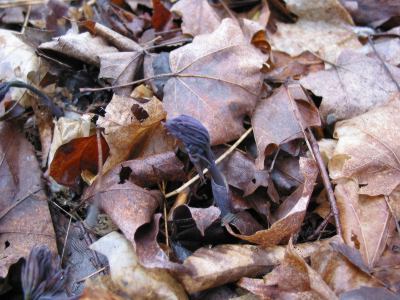 |
Blue cohosh, just
peeking up from the leaf litter on the forest floor. Many
trilliums are also pushing up, with still tightly closed flower
buds. |
|
| |
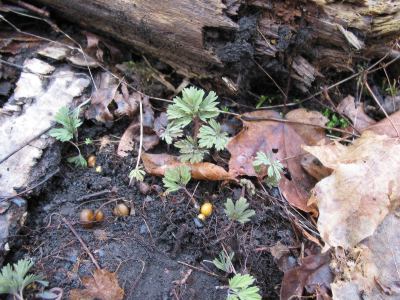
|
Here is a small plant
called "squirrel corn", due to the small,
corn-kernel-sized tubers, visible here on the ground near the plant.
This plant is often confused with a similar one,
called "Dutchmen's breeches".
|
|
|
|
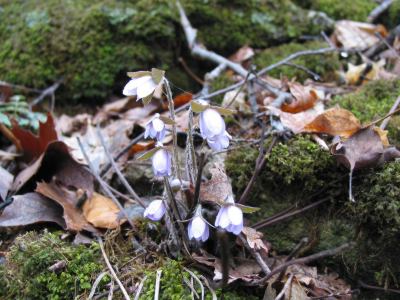 |
Everywhere are the
beautiful early spring flowers of hepaticas.
These flowers come out even before the plant's
leaves.
|
|
| |
|
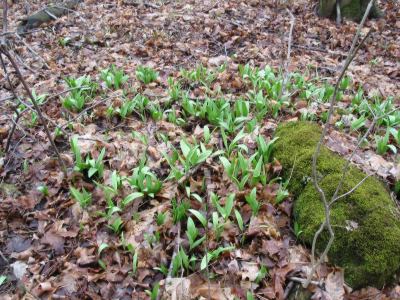
|
Wild leeks are almost
ready to harvest. In some areas they are almost as thick as grass!
Wild leeks make a delicious soup.
|
|
|
|
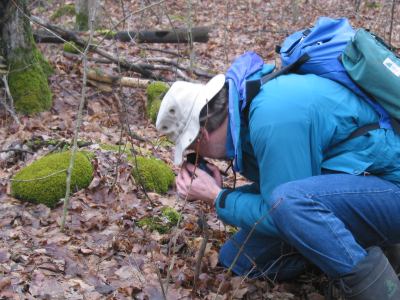 |
Close-up study of nature. |
|
| |
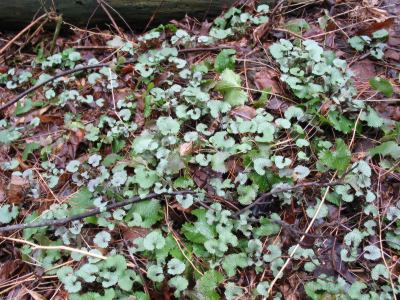 |
Even far off-trail, garlic
mustard can be found.
Garlic mustard is an extremely invasive alien
plant. If left to itself it often grows over acres of woods, shading
out all other plants, resulting in a "garlic mustard
desert".
This picture shows it in its over-wintering form.
This plant actually photo-synthesizes all winter long.
(For more info on garlic mustard please visit the
Earth
Caretaker website, Alien Plants - Garlic
Mustard section)
|
|
|
|
|
Along the way we investigated a porcupine den. The
porcupine was spotted sleeping high up in a nearby tree, curled up in a
ball.
|
|
|
 |
Beautiful, quiet, misty
swamp. |
|
| |
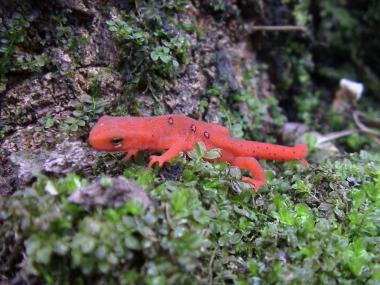
|
We found two red efts,
which are the juvenile, non-aquatic form of the red spotted newt.
They were only about 5 inches long.
(photo by Rob Bicevskis)
|
|
|
|
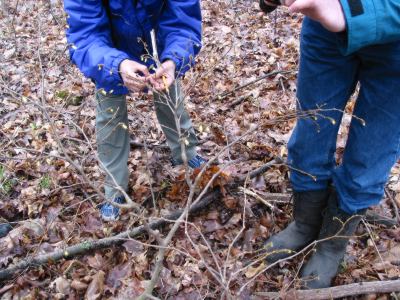 |
The leatherwood is in
flower. Tiny, fragrant flowers that appear on the plant before the
leaves. |
|
| |
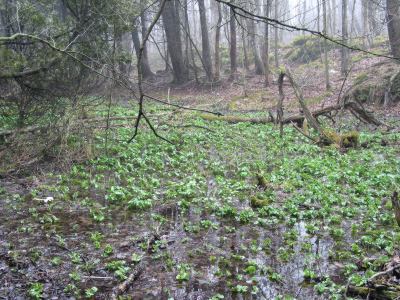 |
Marsh marigolds are coming
up everywhere there's water, with fully formed flower buds.
|
|
|
|
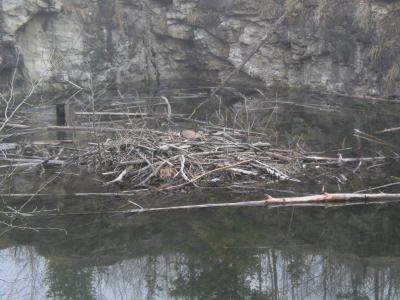 |
In an old flooded quarry,
we found a Canada Goose sitting on its nest, which was built atop an
old beaver lodge.
Can you spot her?
|
|
| |
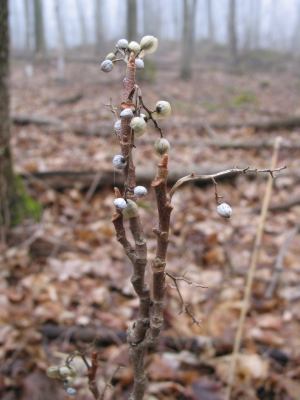 |
Poison ivy berries, still
on the stalk from last fall.
It is said that they are still very poisonous even
this long after they formed.
|
|
|
|
|
Our lunchtime entertainment was provided by two fire piston
demonstrations, provided by Rob & Ron.
|
|
Click on the small photo to
see a movie of this firepiston in operation |
Click on the small photo to
see a movie of this firepiston in operation |
|
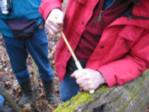 |
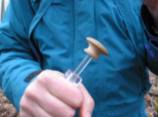 |
|
Windows media format
320x240, 242 KB
This fire piston was made by Ron White. |
Windows media format
320x240, 441 KB
This fire piston was made by Rob Bicevskis.
In the movie, look close and you'll see
the coal produced in a small piece of tinder fungus. |
|
|
(For more info on fire pistons please visit the
Wildwood Survival website, Fire
Pistons section) |
|
|
|
All in all, we had a very good walk. We all learned a lot. We
learned the names and uses of a lot of plants and trees. As well, we had a
demonstration of fire pistons as out lunchtime entertainment! And many
survival skills tips were shared.
Thanks to all who attended for helping to make this an
excellent day for all involved!
|
|
|
| |